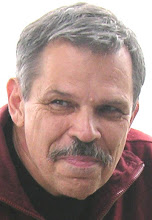Translating Frank Miller's graphic novel to IMAX.
 THE STATE of COMPUTER ANIMATION & TECHNOLOGY in films
THE STATE of COMPUTER ANIMATION & TECHNOLOGY in films There is no question that Hollywood films are all breaking new ground as they seek to eliminate the small independent filmmakers. Their aim is to put something up on the big screen that no small filmmaker can duplicate and the magic ingredient is money.
PREVIEW: 300 Seconds Video Clip of 300 SEE IT HERE!
http://www.movieweb.com/news/50/18150.php
300 is an adaptation of Frank Miller's epic graphic novel. Using hyper-real renderings and digital state-of-the-art computerized enhancement similar to Miller's own graphically stylized illustrations, the film tells the true story of 300 elite Spartan warriors led by their fearless king Leonidas (Gerard Butler), who thwart the charge of Xerxes and his massive Persian army at the battle of Thermopylae. Facing insurmountable odds, their valor and sacrifice inspire all of Greece to unite against their Persian foe, leading to the origins of democracy.
The film was shot in 60 days completely in Montreal, with the exception of two days of insert shooting in Los Angeles.
There are 1500 cuts in the film, and about 1300 involve some sort of visual effect and ten visual effects vendors contributed to the film, spread over three continents.
The filmmakers used bluescreen 90% of the time, and greenscreen for 10%. They chose blue because it better matched the lighting paradigm (green would have been too bright) and because red garments (a la spartan capes) look better when shot over blue.
There was one day of location shooting, which was for the horses that were shot for the 'approaching sparta' scene.
Post production took almost a year. The film was edited on an Avid, with an HD cut also maintained in Final Cut Pro The 3D was made using Maya, XSI, and Lightwave The 2D composites were made with Shake, Inferno, Fusion, and Combustion. The filmmakers prefer Macintosh, but large portions of the movie were made under Linux. Asset management was handled by custom software written in the Panorama development environment, made by Provue.
Color management was handled by Truelight software. The film was scanned on a northlight scanner and was recorded on the arrilaser. Most of the film was shot at high speed, between 50 and 150fps. Normal film is at 24fps. The film was transferred to HD SR tape and quicktime, and HD quicktimes were the basis for the HD preview cuts. The working resolution for the film was 2K, at a working aspect ratio of 2.11 and a projected aspect ratio of 2.35.
The script demanded that most of the male cast spend the majority of their screen time bare-chested, as per Frank Miller's original graphic novel. Therefore, in order to adequately present themselves as the most well-trained and marshalled fighting force of the time, the entire principal cast underwent a rigorous and varied training regime for 6 weeks prior to shooting.
According to an interview with IGN.com, Director Zack Snyder says that fighting styles and formations (particularly the Spartan's phalanx) were purposefully changed - making them historically inaccurate - so they'd "look cool" and work better for movie purposes.
The movie never claims to be historically correct. It is based somewhat loosely on Frank Miller's 1998 comic book mini-series. Changes from history were made by Miller and Snyder so as to appeal to a wider audience and create a more exciting and visually stunning action movie, rather than a typical historical epic.
Frank Miller was inspired by the original Battle of Thermopylae after viewing the 1962 film "The 300 Spartans" as a child. His perception of the 'hero' concept changed greatly after seeing the Spartans make their sacrifice.
READ MORE...
http://www.imdb.com/title/tt0416449/trivia
Copyright © 1990-2007 Internet Movie Database Inc.


0 Comments:
Post a Comment
<< Home